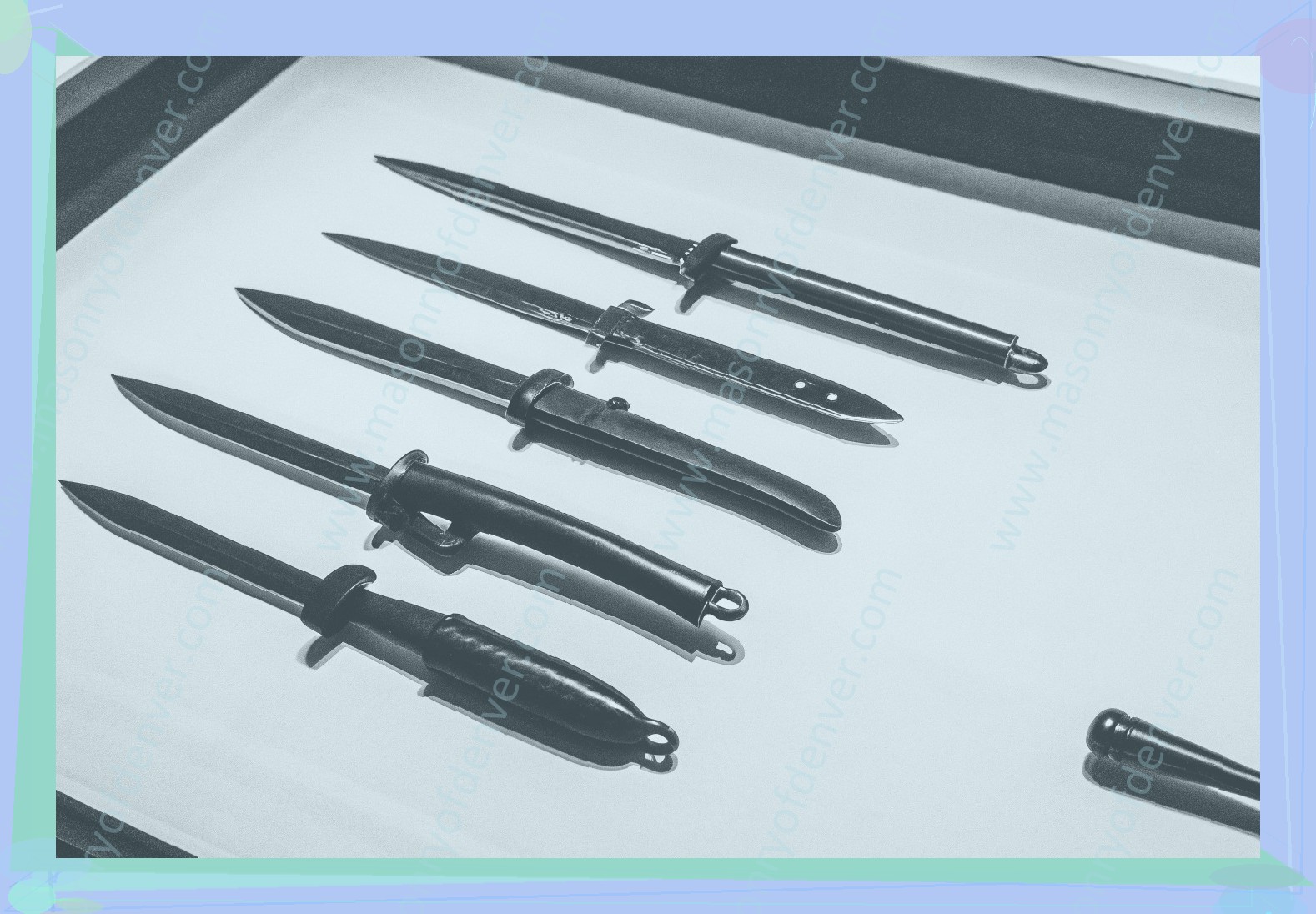Summary of Knives and the Canadian Criminal Code
A general overview of how Canadian law regulates the ownership and carrying of knives can be complicated given the intersection of a number of federal and provincial/territorial laws. Although the Criminal Code is a federal law that governs knife crimes from coast to coast, individual provinces and territories are authorized to legislate on matters of property and civil rights which may include certificates and permits issued under provincial or territorial weapons and hunting laws.
The Criminal Code describes as a weapon any "thing used, designed to be used or intended for use . . . for causing death or injury to any person or for threatening death or injury to any person" (Criminal Code s. 2). In other words, even if a knife is not in itself considered a weapon, it may be considered a weapon based on how it is used. Hence, there are no complete and absolute prohibitions on all knives in Canada.
There are a number of ways that a knife may be regulated by the Criminal Code. The most pertinent knife-related Criminal Code provisions include stabbing implements, dagger-like weapons, deadly weapons generally as well as offensive weapons. For example, "every one who without lawful excuse carries a weapon or an imitation thereof, in a public place is guilty of an offense and liable to imprisonment for a term not exceeding two years" (Criminal Code s. 91). The Code also prohibits using a knife in accordance with its purpose if such actions cause injury to an individual, whether by means of threatening, brandishing or even throwing the weapon (Criminal Code s. 267). Further , every one "who uses or threatens to use a weapon or an imitation thereof on a person" is guilty of an offense punishable by life imprisonment (Criminal Code s. 250).
Although many knives are readily available at common retailers in Canada, some knives may be prohibited or restricted. Knives such as push daggers, switch blades and gravity knives are classified as restricted because they are readily attachable or concealable. Restricted and prohibited knives cannot be owned, transferred or imported into Canada.
In addition to federal laws, certain provincial and/or territorial laws may bear influence on the ownership and carrying of knives. For example, in Ontario, any person who possesses or uses a "blow dart, shurikien or any other prescribed weapon is guilty of an offense" (Weapons Restricted or Prohibited regulations s.s 66 (2)). A common analogy with knives are swords. Indeed, both Newfoundland and Labrador’s Weapons, Explosives and Other Dangerous Things Act and Ontario’s Weapons Restricted or Prohibited regulations classify swords as prohibited weapons.
As the law in Canada evolves, provincial regulations may shift on these issues and a knife that is permitted in one province may soon be prohibited in another.
Aside from federal and provincial laws regulating the ownership and carrying of knives, municipalities may also impose restrictions on such devices. For example, the City of Calgary’s Horse Drawn Vehicles and Related Activities Bylaw 43M2011 (s. 58) proscribes a prohibition on the "use or distribution of foreign items including, but not limited to, in-game pitches, hawker sticks, bugles, shiny bells, whistles, noise makers or any other items that may frighten horses" during horse races, parades and sleigh rides.
Prohibited Knives and Objects
A number of knife designs and features are expressly prohibited in Canada, regardless of how long or short they are or whether on a sheath. These include:
Knives that are:
While the Criminal Code doesn’t specify exactly what length is required for a knife to be considered a "dirk or dagger", these are generally understood to be large enough to be used in thrusting attacks. Even with blades that are not long enough to be considered daggers or dirks, the use of the double edged part can be considered illegal. A Canadian Law website advises that if you must own a double edged knife, keep it out of sight from the public as much as possible.
Knives that are:
The Criminal Code does not define a "razor blade" but courts have found that this includes straight blades with no moving parts that are two sided and unguarded.
Blade length is not the key issue with the blades of boot knives – whether they have rotating or folding blades, or whether they are fixed. Rather, in determining whether the blade is unlawful, the physical characteristics of the object are more important. Specifically, if the blade is "capable of being drawn or opened by centrifugal force". Put another way, a boot knife is unlawful, even if it cannot be opened by centrifugal force, if it is able to be opened by rotational movement.
Knives with blades that are:
If a knife has a blade that is hidden within the hilt until the hilt is depressed, this obstacle can constitute a button, however, so long as the second pushbutton is fully concealed in the hilt until it is pressed, it doesn’t matter how the knife makes into the other pushbuttons to release the blade. That knife would not be illegal in Canada.
In addition to the knives listed above, knives that are non-mechanical without shed blades are also prohibited. These are knives that do not require some kind of mechanical effort to reach their concealed position. In addition, knives with blades that are protected at all times by a sheath, within the handle itself, are also illegal.
It should be noted that even if a knife is legal under the provisions of the Criminal Code, it might still be illegal under other laws, like at the municipal or provincial level. Further, even when knives are legal, it is always illegal to use or threaten to use them in commission of a crime.
When It’s Okay to Carry a Knife
The legal carrying of knives in Canada, although not straight forward, is reasonably well defined. Canada’s Firearms Act requires firearms owners to be licensed and firearms to be registered. It does not apply to knives or other sharp objects, like swords, machetes, or hatchets. The Criminal Code governs the use and possession of weapons, including knives. The Criminal Code also outlines the limitations on knife carry that are legal in Canada. Overall, knives can be divided into two main categories for legal carrying:
Weapons definitions and classifications are somewhat ambiguous in law and often rely on the courts for interpretation; however, there is no shortage of well-written cases that present the law. At its most basic level, a knife can legitimately be considered an offensive weapon if it is used to commit a crime, is capable of causing bodily harm, or is intended to be an offensive weapon. The definition of "weapon" in the Criminal Code includes "any thing that, through its use or intended use, is capable of causing death, injury or damage to persons or property." This section also expands on the intended uses of a weapon, specifying that it is a weapon if it is "intended to threaten or intimidate any person." Section 88 clarifies that tools that are not intended to be weapons are not classified as weapons.
The term "weapon" in the Criminal Code is not synonymous with the word "knife"; the state of the knife and the nature of its use must be examined. A victim of a knife attack is more likely first to report it as a stabbing, followed by a slashing. This indicates that "weapon" or knife may be interchangeable terms with some people but they are not defined as synonymous in law. In practice, it has been held in one case that a person cannot be an offender if, at the time of the offense, they had a knife for the purpose of protecting him/herself when met with a perceived threat.
Knives that are primarily made to cause injury or death are weapons under the Criminal Code. In one case, the British Columbia Supreme Court noted that knives in this classification are not ethics neutral. The law also considers how a knife will be used. Knives that are made as self-defense appendages such as parrying knives, downrange combat knives, tactical folding knives or analogous military knives are also weapons. Even knives and folding knives, that when carried or displayed, might be reasonably interpreted as being for carrying out an aggressive action against a person or for slashing the skin of a person are weapons. This is determined from their design, general purpose, and how they are carried. This means that even if these types of knives are used only for their intended purpose, they are still weapons.
Knives that are primarily made or designed as tools and not as weapons are not weapons in law. Tools that look like weapons, but are in fact tools, are not weapons. While knives are tools, when carrying as everyday items, if they are used as weapons they are weapons. Knives whose primary purposes are to cut are not weapons. When carrying knives, the knife must be carried and not be used in a threatening or intimidating manner. The circumstances under which you carry or use the knife will usually determine the legal classification at the time. The law does not require the classification of knives used and carried at times when its use cannot be considered as a weapon. Knives used in combat, on the other hand, are weapons at all times. Knives that are carried for cultural purposes, such as for community, ceremonial, and social reasons are not weapons.
A conviction for an offensive weapon will not likely stand where the use of force was necessary to defend oneself from an actual or threatened assault. A knife intended for bloodletting or for specifically injuring a person is an offensive weapon. Knives intended for practical purposes, such as school or kitchen knives, strapped to body — at any level — could lead to a weapon charge. Knives strapped to the body in a way that would appear obvious in a minimal search, such as kneeled, angled, or with a clip visible are met with positive legal resistance. Knives carried like neck knives, strap knives, pole knives, sheath knives and other knives where the blade is hidden from view may be met with more resistance. Knives with blades under 12.5 cm are less likely to be classified as weapons. Knives mounted in sheaths on the body, such as belt knives, may be met with positive legal resistance. Knives within a sheath in "any visible location" may be classified as weapons. Knives worn below the waist are more likely to be classified as weapons. Knives concealed in other articles of clothing, such as bags and coats, are less likely to be classified as weapons.
Penalties for Carrying Prohibited Knives
The consequences of carrying an illegal knife in Canada can vary depending on several factors, including the type of knife, the province or territory in which you are found, and whether you have committed any other crimes while carrying the knife. Generally, however, the penalties for carrying an illegal knife are fairly serious.
Section 7 of the Criminal Code of Canada forbids the carrying of a concealed weapon. The penalty for this crime is a minimum of 6 months imprisonment and a maximum of 5 years in prison. The law does make provision for a reduced sentence if the accused cooperates with police and provides evidence that leads to a conviction. Upon conviction of carrying a concealed weapon, the accused also faces a mandatory minimum of one year without bail pending trial and a mandatory minimum of three years in jail for subsequent offenses.
Knives that have a blade length of more than 4 inches , can be considered illegal. Stun knives, butterfly knives, bayonets, ninja throwing stars, push knives, and switchblades are also illegal both to carry and to own in Canada.
Ontario case law has established precedent related to knives. The Ontario Court of Appeal found in R. v. Philpot (1998) that a combat knife was a prohibited weapon. The court stated that the knife, by its very nature, is designed for and intended for use as a weapon, even as a backup weapon. Same concept in the case of R. v. Scarborough (2011), where the Court found that a large bowie knife, fitted with a scabbard, is a prohibited weapon. Because the accused in that case made no use of the knife, the court was lenient in sentencing. Sentencing included community service, prison time, and a prohibition order from being found in possession of a weapon for five years.
Selling and Distributing Knives Legally
In most of Canada, the purchase and sale of bladed weapons are largely unregulated. There are, however, some notable exceptions.
In Quebec, you need to be at least 18 years old in order to buy a knife with a blade that’s more than 10 centimetres long. Due to a loophole in the law, businesses that are licensed to sell knives in Quebec can often get around this age restriction by using an existing loophole that allows them to sell knives for transactional purposes (like cutting bags or boxes) to people who are underage. This kind of commercial activity is legal as long as there’s a safety guard or other mechanism in place that limits the potential for injury.
In Ontario, you have to be at least 19 years old to legally purchase a knife that has a blade longer than 30 centimetres.
Alberta also places some restrictions on the sale of knives. If you own a business that sells knives with blades longer than 5 cm, then you need a license in order to sell those knives.
British Columbia and the Yukon additionally impose restrictions only on the sale of certain knife types. These include push knives, belt knives, switch blades, butterfly blades, and gravity knives.
The territories of Nunavut and the Northwest Territories are similar in that bladed weapons are subject to few restrictions. A handful of government-operated stores do, however, ban the sale of knives with blades longer than 9 inches (22.9 cm) within the store.
Public Welfare and Knives
Canadian laws on knives have public safety goals. While knives are an incredibly useful tool, they can also be dangerous. In considering a new knife regulation, the Government of Canada expressly noted that knives are a "widely used tool" but the intent of the law "is to bolster public safety". It is interesting how this goal is explicitly a part of the knife law making process and not just after the law has been passed. This indicates that the government likely undertook to develop and consider the intention behind the law before passing the regulation.
The Federal Government works on knife safety . The Canadian Centre for Occupational Health and Safety website conducts knife safety seminars across Canada.
Law enforcement also speaks about knife safety. The Kitchener, Ontario police recently gave this knife safety advice: "Ensure knives are sheathed when not in use and they are stored safely and securely." Young people must know where their parents keep the knives… "Educate your children about what to do if they see someone coming at them with a knife -run away and tell an adult. Teach children the proper way to use a knife and only allow them to use these tools under close supervision. Children should never be allowed to play with knives."



